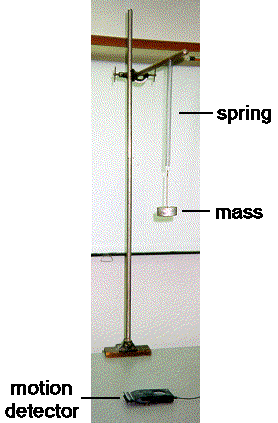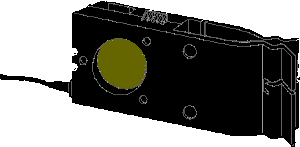|
|
|
|
|
|
Part 1: The Undamped SpringIn this project we model the motion of a spring-mass system with and without damping. The figure at the right shows an experimental setup for tracking the motion of a mass hanging from a spring by using a motion detector, which might be attached to a calculator or computer. At the bottom of the figure, and enlarged below, is a Personal Science Laboratory (PSL) motion detector. The Calculator Based Laboratory (CBL) system has a similar motion detector. If you have a facility for collecting your own spring-mass data, you can use that data in this module. If you do not have such a facility, you can use our data instead. We offer some suggestions for collecting your data.
|

|


with y(0) = y0 and y'(0) = 0. Determine an appropriate value for y0, and enter it. Then enter your model formula for the solution Y(t). Use the symbols K and m in your formula for Y(t).
* We will
use capital K for the spring constant throughout this module because lower
case k is used in the worksheet for indexing information.
|
|
|
| modules at math.duke.edu | Copyright CCP and the author(s), 1998-2000 |